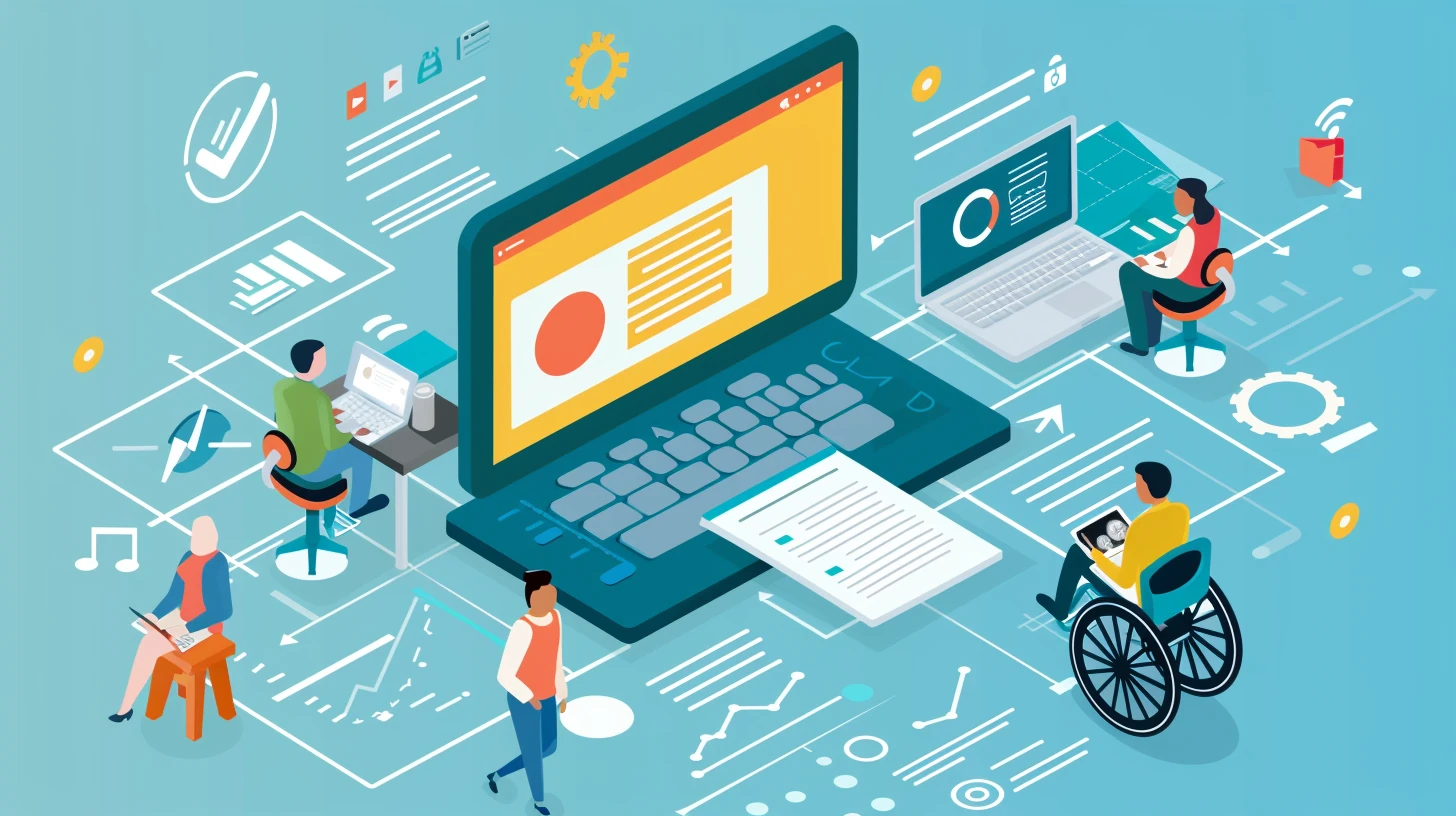

The Web Content Accessibility Guidelines (WCAG) represent more than a set of technical recommendations; they are the bridge to a more inclusive digital world.Developed by the World Wide Web Consortium (W3C) through a global effort, the WCAG apply to all web technologies and are verifiable through automated tests and human evaluations. They offer a solid foundation for those seeking to promote digital accessibility.
These guidelines serve as a guide not only for developers but for any professional involved in creating and maintaining accessible digital spaces:
The WCAG are a series of recommendations designed to:
This approach ensures that digital content is more inclusive and accessible to all users.
The Web Content Accessibility Guidelines (WCAG) present a detailed structure that, at first glance, may seem complex due to its thoroughness and depth. They are organized around four fundamental principles, each supported by specific guidelines and clearly defined conformance criteria. These conformance criteria, essential for evaluating the accessibility of a website, vary according to the version of the WCAG.
Principles:
At the highest level are the four principles that provide the foundations of web accessibility:
WCAG 2.1 Web Content Accessibility Guidelines
Below the principles are the guidelines. These outline the essential goals that content creators must achieve to ensure greater accessibility for users with various disabilities.The number of guidelines may vary according to the version of the WCAG. Although these guidelines themselves are not directly verifiable, they establish a framework and clear goals that guide authors towards understanding and effectively applying the conformance criteria, thus facilitating the implementation of specific techniques to improve accessibility.Some examples of guidelines associated with the principles:
Follow our social media for tips on how to apply these accessibility guidelines. Don’t miss our upcoming updates!
The guidelines consist of success criteria. Each success criterion has a level of conformance (A, AA, or AAA) that indicates its impact on accessibility.
The WCAG documentation has evolved through different versions to address the changing needs of digital accessibility.
The number of conformance criteria in the different versions of WCAG 2.x is:
*WCAG 2.2 adds two new level A criteria but removes one (4.1.1 Parsing).
In line with Spanish regulations and the upcoming compliance with the European Accessibility Act, it is crucial to review if your project meets current accessibility standards. Royal Decree 1112/2018 marked an important milestone, and now, we look towards 2025 with the European law that will require at least level AA conformance. Don’t fall behind in digital accessibility.
To explore more about these fundamental guidelines and how they can transform digital accessibility, you can read an introduction to the WCAG here.
For constant updates and personalized assistance, follow us on our social media or contact us through the form. We are here to ensure that your project not only meets the guidelines but also offers an inclusive experience.
Are You Ready to Take the Step in Digital Accessibility?
Contact us to get started!


Cristina Torné Soler
Compartir en Redes Sociales